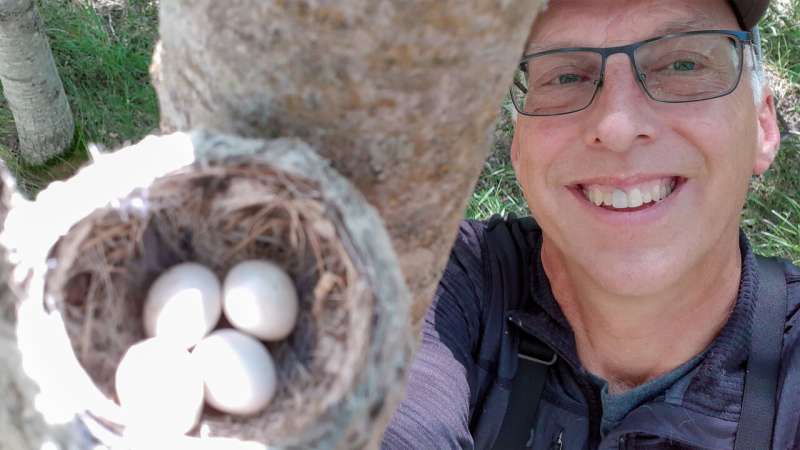This article has been reviewed according to Science X's editorial process and policies. Editors have highlighted the following attributes while ensuring the content's credibility:
fact-checked
trusted source
proofread
Study pinpoints most helpful habitat for least flycatcher

A new University of Alberta study helps define the most helpful breeding habitat for the least flycatcher, a species of bird in rapid decline. The findings are published in The Wilson Journal of Ornithology.
Research exploring the nesting productivity and preferred breeding habitat of the small olive-gray bird could guide conservation measures if its population continues to drop in North America, says study co-author Glen Hvenegaard, a professor of environmental science at Augustana Campus.
"If we know what that type of habitat is, we could be proactive about protecting this bird."
Because of habitat disturbance and insecticide use, which has likely affected their food supply, aerial insectivores, a group of birds that feed on insects while flying, and includes the least flycatcher, have declined by 59% in Canada over the last 50 years—"the worst drop of any group of birds"—and is also sliding by 1.8% per year in Alberta, he adds.
Though it is not currently considered threatened, the least flycatcher—so named because it's the tiniest of its group—is designated as a sensitive species under the Alberta wild species general status listing.
"It could be at risk if its numbers continue to decline," Hvenegaard says. "If that downward trend continues, it may require some conservation action, so it's important to know about their breeding habitat and where they are most productive, before we get to that stage."
The bird is a valuable part of the ecosystem, keeping the insect population balanced and also serving as food for other birds like hawks and owls.
The research team, which included members of the Beaverhill Bird Observatory, measured the least flycatcher's nesting success and habitat use in the Beaverhill Natural Area, where it is the most common bird seen. The wooded area adjoins the Beaverhill Lake Heritage Rangeland Natural Area in central Alberta.
The researchers monitored 28 nests for success in egg laying, incubation and hatching, up to the stage where the chicks were old enough to fly.
In total, 22 of the nests, or 79%, were deemed successful. On average, 3.9 eggs were laid per nest, 3.4 of them hatched and 3.1 of the chicks matured enough to leave the nest.
The team also recorded the types and heights of the area's main nesting trees: 75% of the nests were found in trembling aspen and 25% in balsam poplars.
The researchers found that the more successful nests were higher up in the trees, likely because the eggs had more leaf cover and less predation from birds and small mammals, Hvenegaard notes.
All of the information can help establish new parameters for identifying the birds' critical habitat, and "provides more conservation tools" to help protect the population if it does become endangered, Hvenegaard adds.
"We've now learned more about the types of breeding habitats they prefer, such as slightly taller aspen trees, so we could manage forests for tree ages and species."
The results demonstrate the value of the BeaverHill Natural Area, he says, noting that the nesting success and breeding density for the least flycatcher was higher there than in similar studies elsewhere across North America.
"It tells us that designating places like the Beaverhill Natural Area, and managing habitat within these protected areas, could be important proactive tools, showing what the birds need to survive."
The research also shows the importance of ongoing monitoring programs by volunteer groups such as the Beaverhill Bird Observatory, Hvenegaard suggests. The study included data from a census run by the observatory, showing the bird had a high breeding density within the Beaverhill Natural Area.
"Without this work, we wouldn't have the information to detect population change."
More information: Myrthe Van Brempt et al, Nesting biology and breeding density of Least Flycatchers (Empidonax minimus) in the Beaverhill Natural Area, Alberta, Canada, The Wilson Journal of Ornithology (2024). DOI: 10.1676/22-00110
Provided by University of Alberta




















